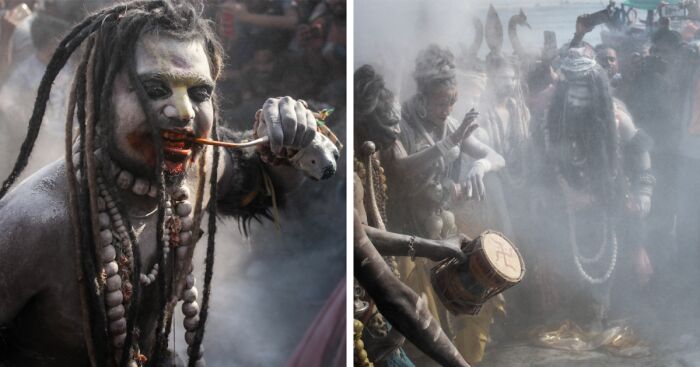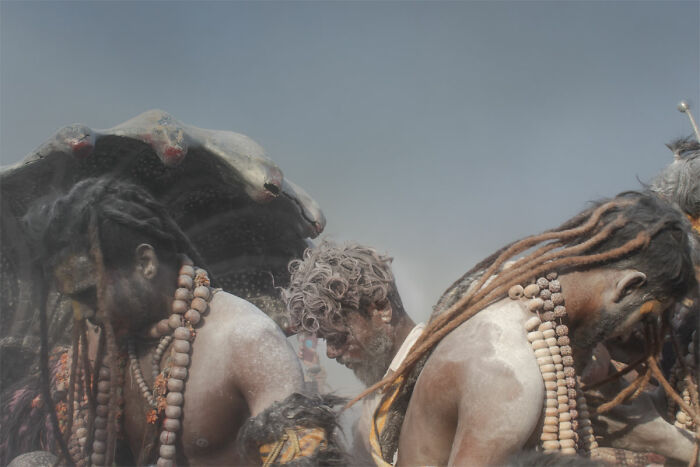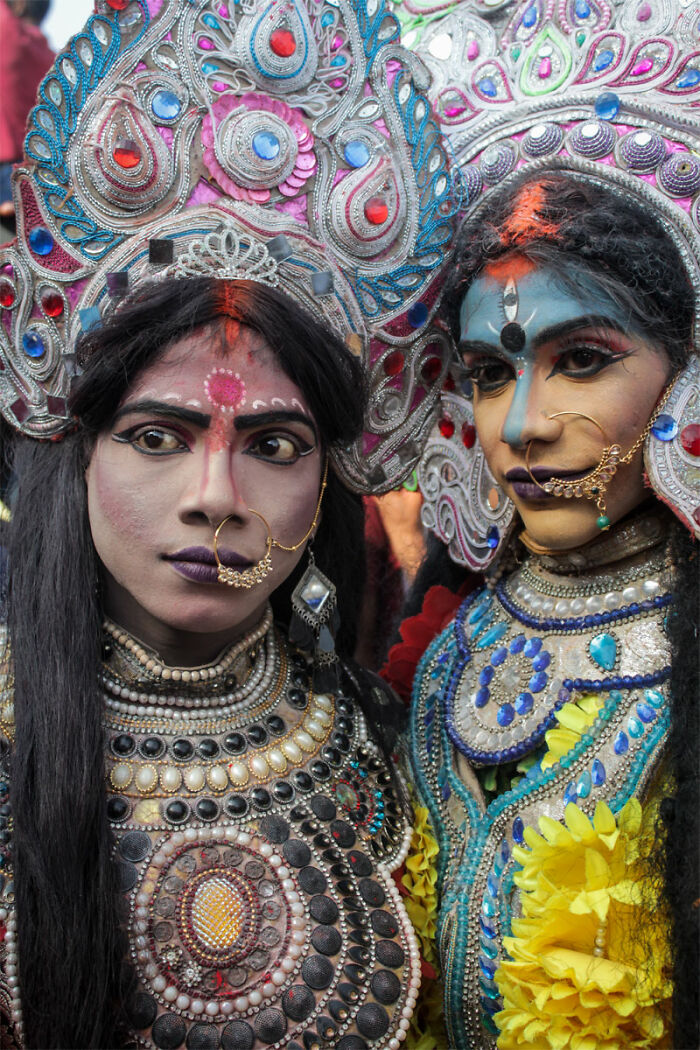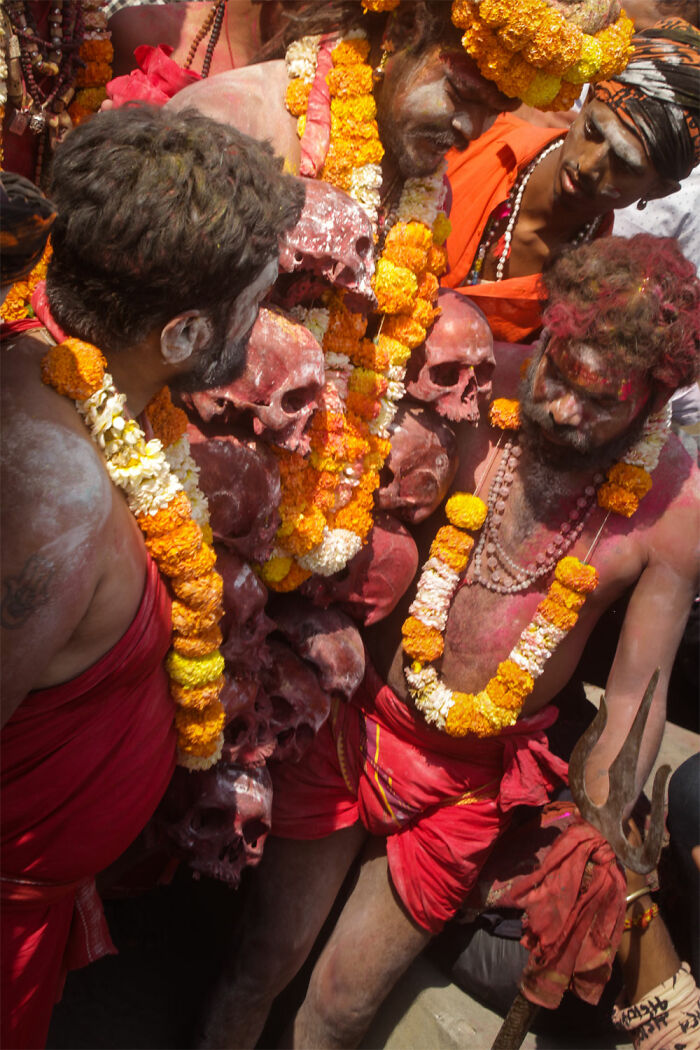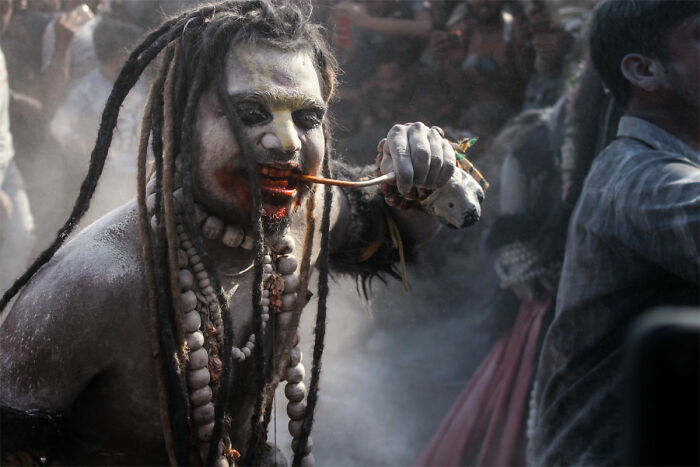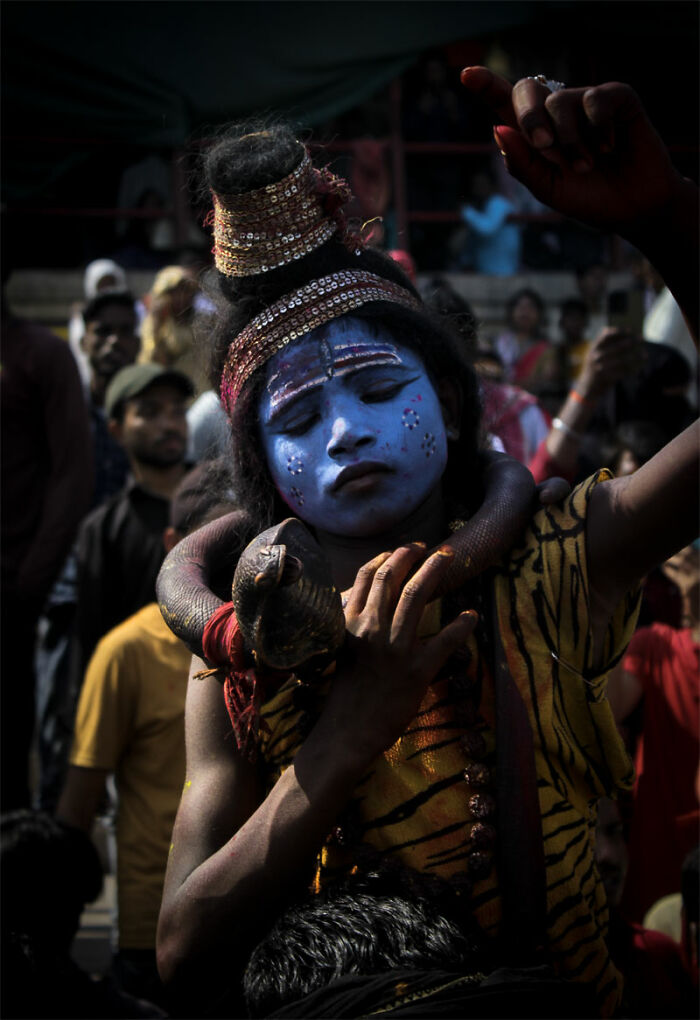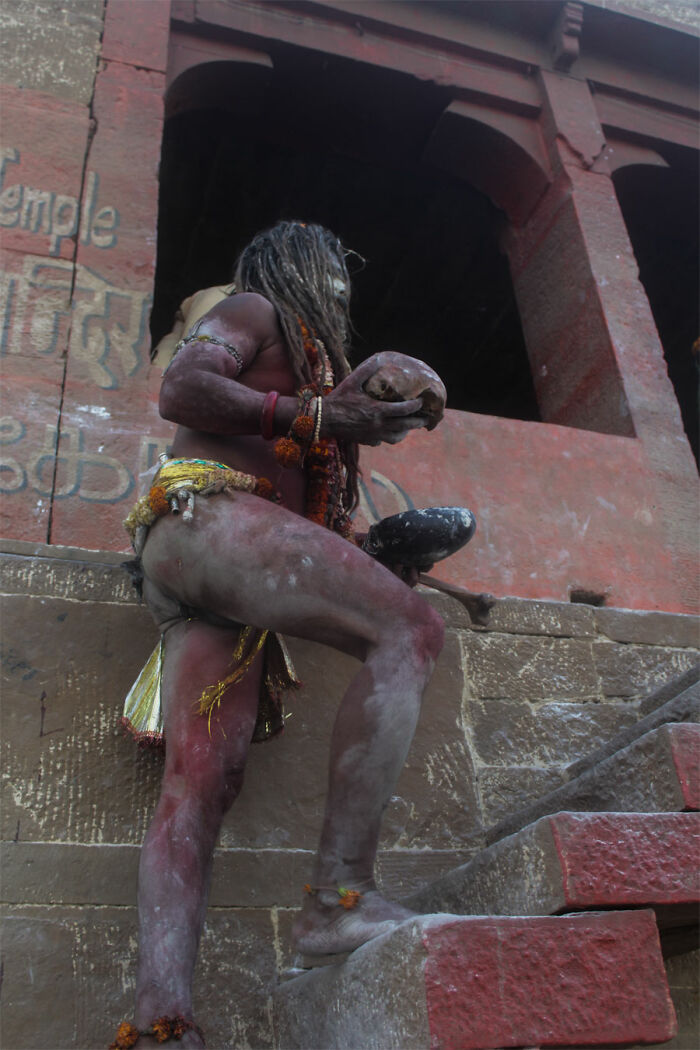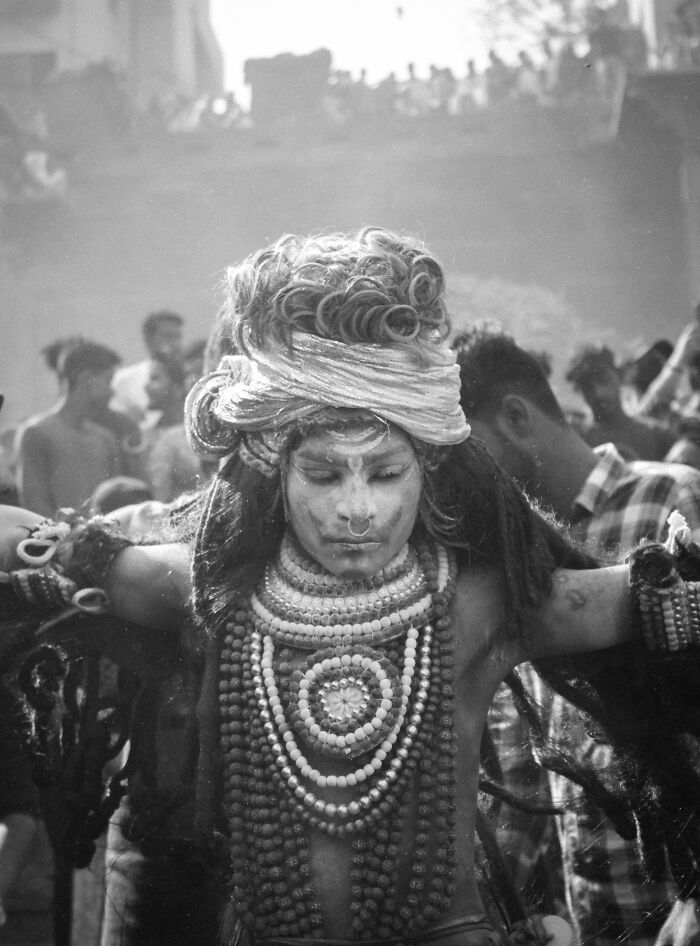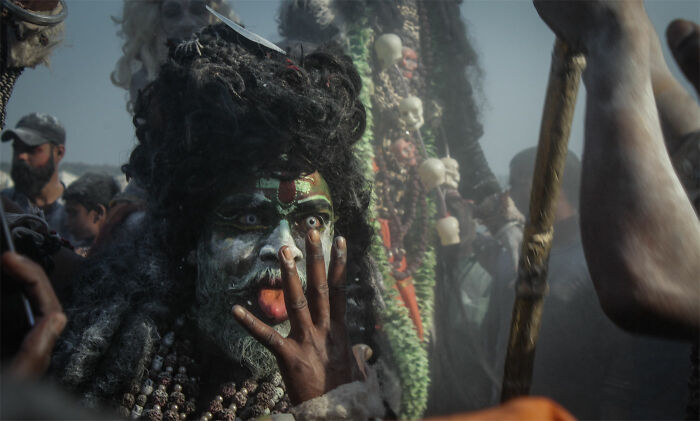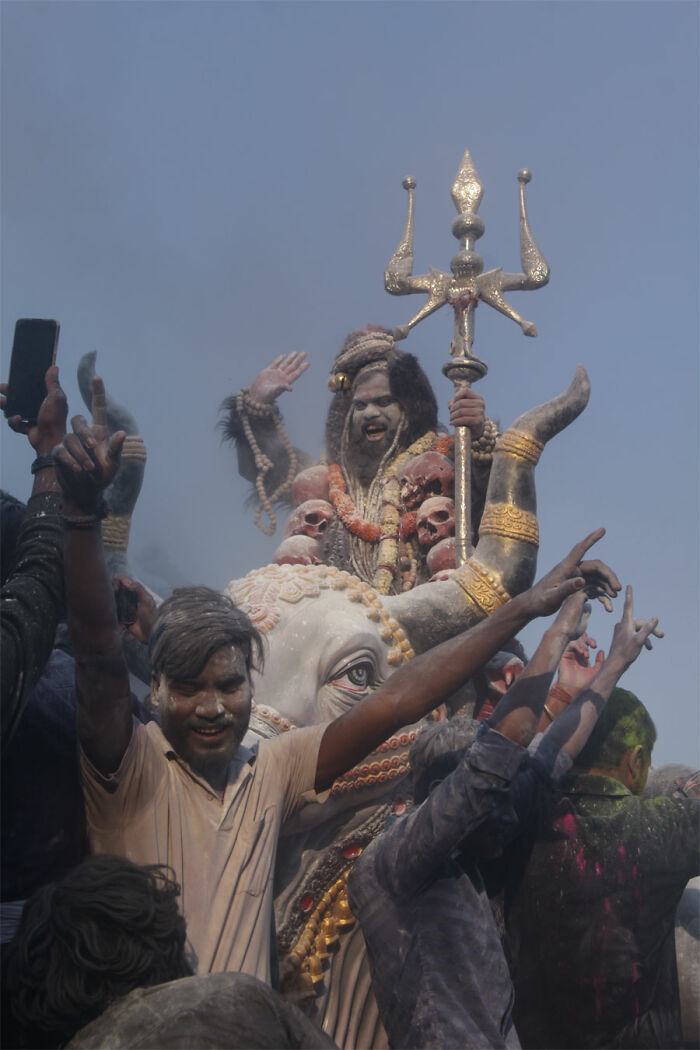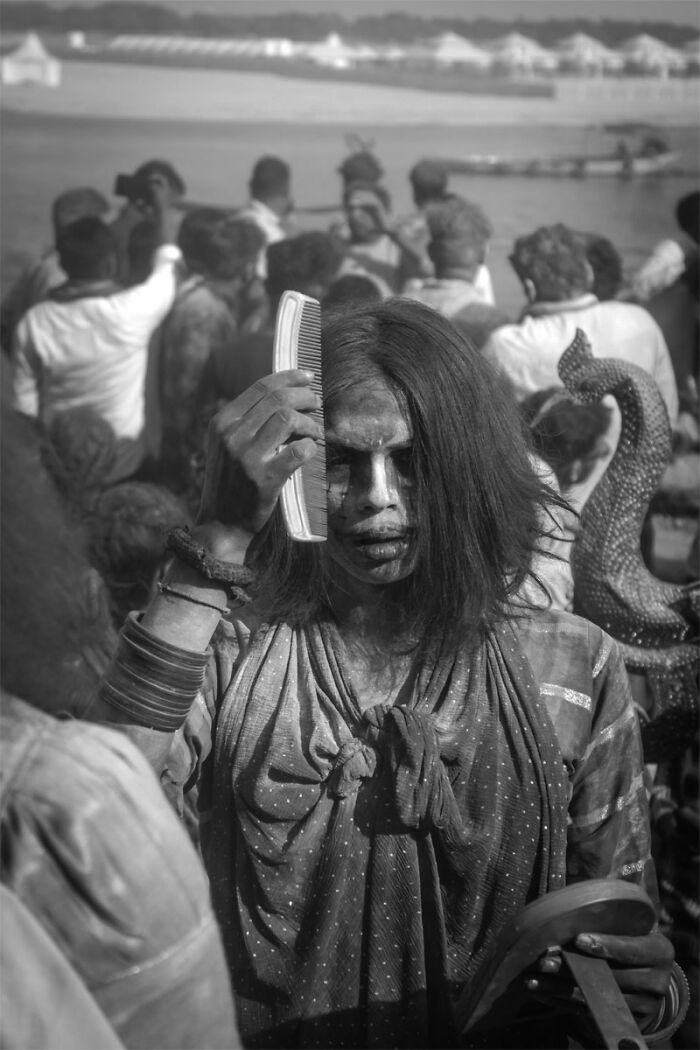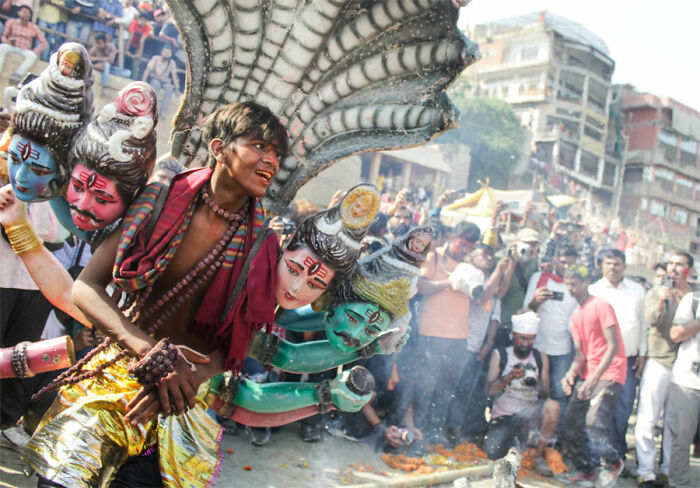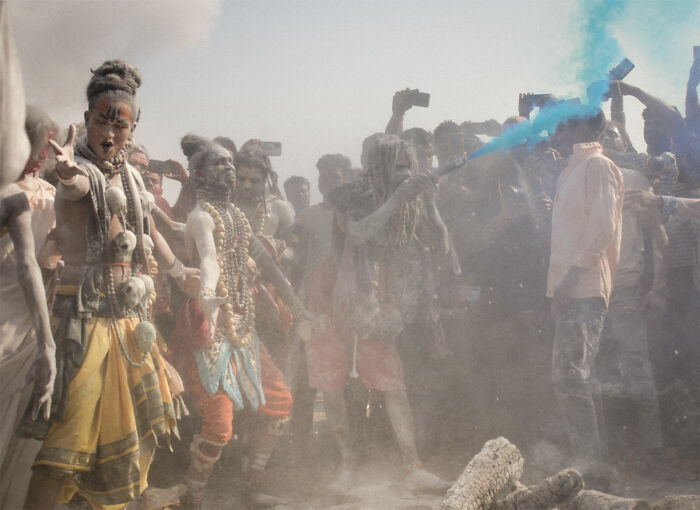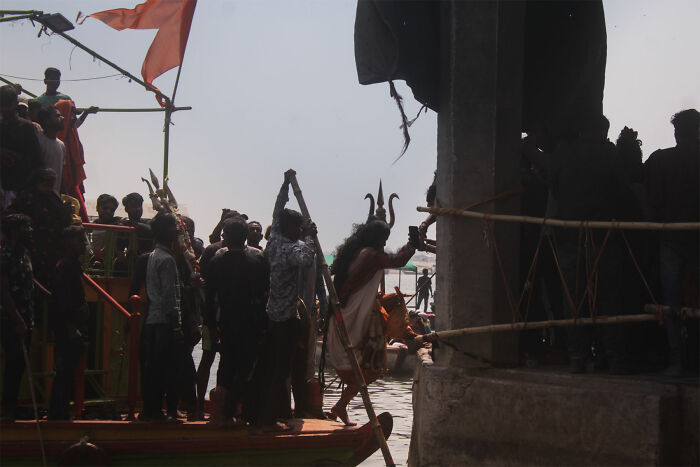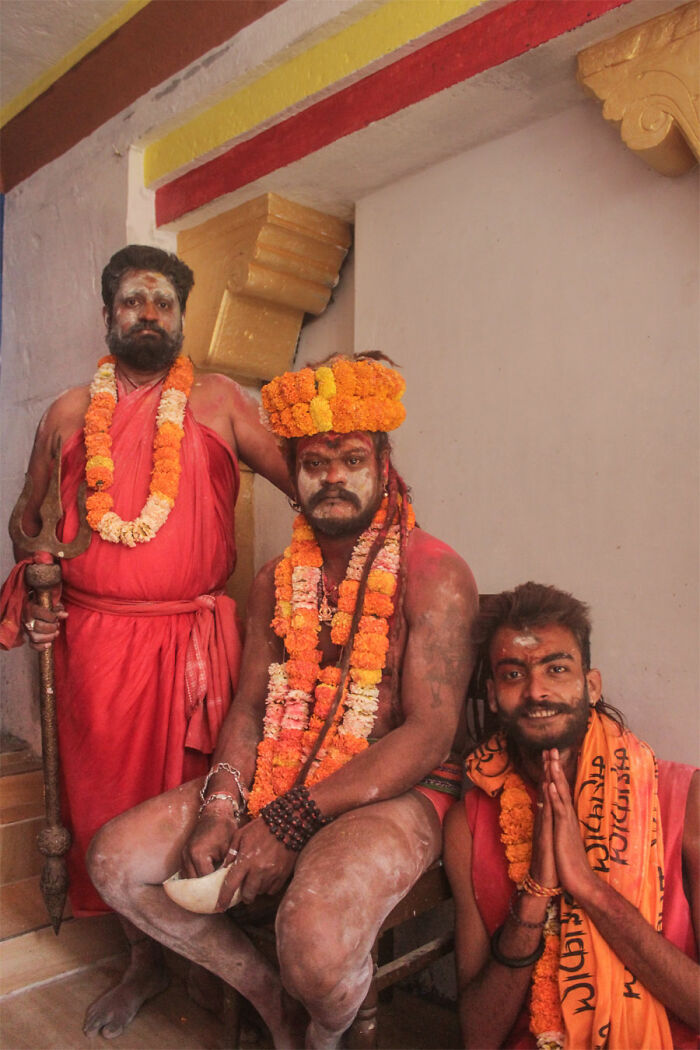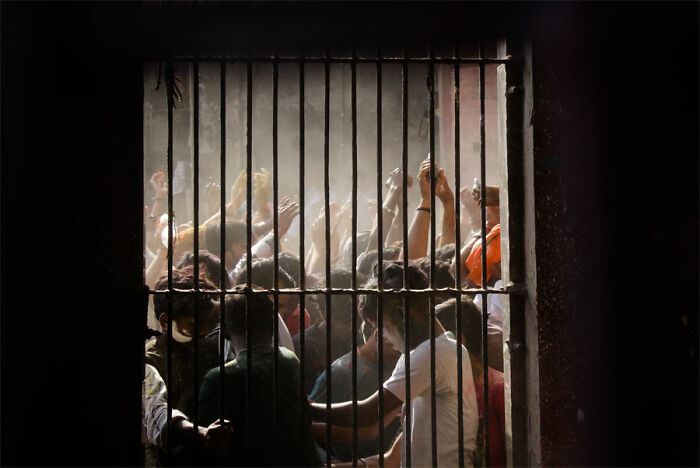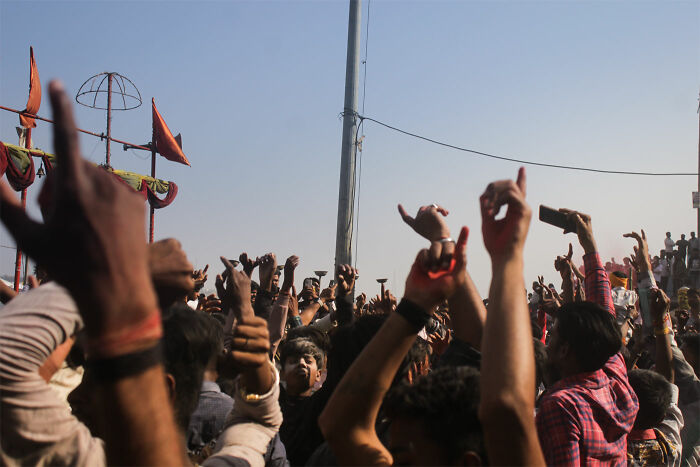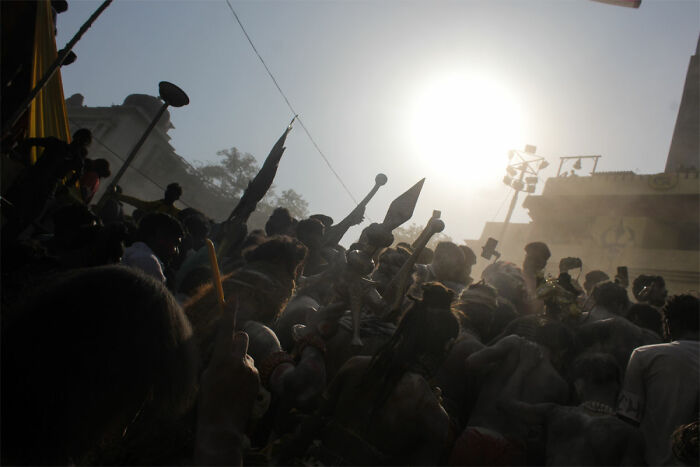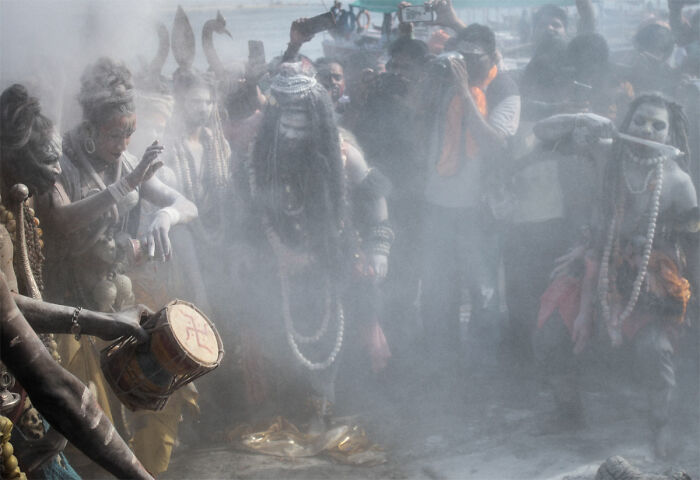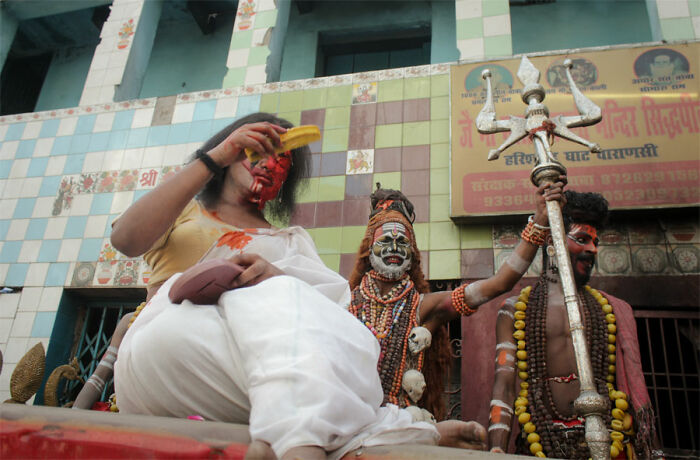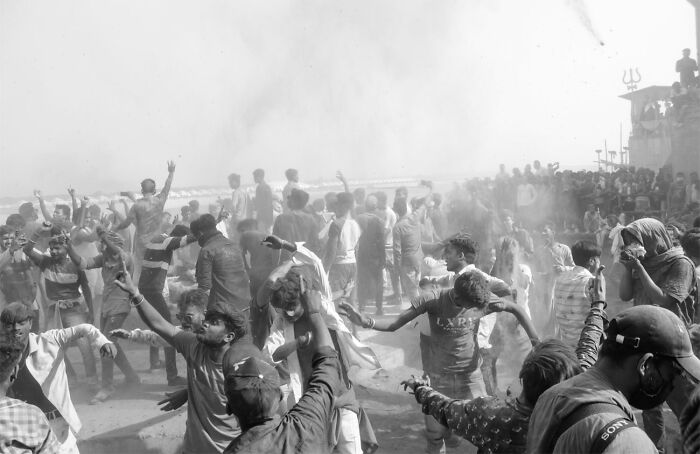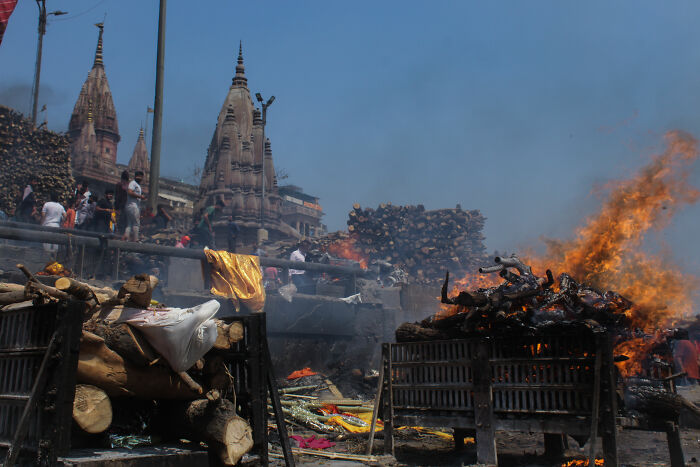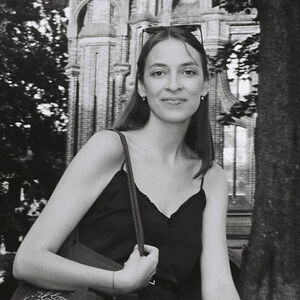"Benares is older than history, older than tradition, older even than legend, and looks twice as old as all of them put together," Mark Twain wrote, fascinated by the legend of this city.
This is my second trip to the oldest city of fire and ancient rituals. This time I invite you to an ordinary ritual made of human ashes in which life meets death and death meets Lord Shiva!
All photos are the result of my fight that day for first place among the crazy crowds to stop this unique time that is the ancient art culture of Masan ki Holi 2023.
More info: stadnichenko.com | Instagram
This post may include affiliate links.
Noise, chaos, and hellish heat in the air in the raw din of cheesy trance music sounds. That's how Indians like it. The whole setting was like a village party. But those energy drove people crazy. And that's how the festive day on the Ganges was going to be.
In 2023, the entire Indian peninsula celebrated the Holi festival on March 8. It is one of the most joyful holidays in India. Associated with the colors of the Festival, it blooms in people and welcomes the spring season. It is a day of new beginnings and order where people can forget all their personal enmities and start with a clean slate.
However, a few days before the main festival in Varanasi, the still little-known world festival of ashes is celebrated.
It is an intense spectacle, like the phantom of the opera or the Rio carnival in an informal form, whose sounds of ''Darmus'' (Indian drums) beat joy on the banks of the Ganges. The aura of the event covers with white dust the crowds devoted to the great Lord and ruler of Benares-Lord Shiva. On the other hand, the embers of the fire burning from the pyres heat the atmosphere to the highest scale. It's a kind of fun in Holi, but not with color, but with ashes straight from the cremation pyre.
I photographed this unique phenomenon in the sweat of my brow and the constant struggle with the Indians to see anything. It's kind of a fight for first place to experience an ancient culture where death is a blessing and ashes are purification and bowing to Shiva.
You can see the omnipresent worship of the festival. The hosts not only rejoice but also impersonate with careful make-up, clothes, and finally their behavior in all incarnations of Lord Shiva.
According to mythology, this tradition represents Lord Shiva's acceptance and love for all beings, visible and invisible.
From here you could also meet supernatural beings such as ghosts and vampires. Each of them, regardless of the creations, went very deep into their role.
A girl incarnated in Lord Shiva during a musical trance of folk songs dedicated to the Lord.
During the two days of the Masan ki Holi festival, the ghostly bearers of human skulls, the Naga Sadhus, together with the Aghori Ascetics, dance around the burning bodies while playing with ashes. With the same ashes, they anoint the followers of Shiva.
It looked like a black metal concert in the Indian version. Ashes fell like rain from the cremation balconies. In frenzy and shouts, the swinging crowd caught his dust. On cast-iron stellar bodies burn in one row. The rising fire blurred the view along with his thoughts.
The ethereal "gans" (followers) of Lord Shiva, such as ghosts, and specters, do not have a chance to play with colors on the first day of Rangbhari Ekadashi, so the Lord Himself comes to them at the place of cremation to play Ash Holi the next day "
It was on this day that an interesting phenomenon caught my attention, which pushed all the faithful to the shore of the Ghats to greet their cremation lords, Lord Shiva himself, he sailed to the shore in a boat with a trident in his hand, the highest Guru Aghori, decorated with human skulls, to play with the colors of life that are human ashes.
It is the highest Guru Aghori Manikandan in the escorted tunnel quickly passed to the temple of God Kali. There he hung up his skulls on the altar.
The Aghori ascetic holds in his hands' human skulls filled with ashes from the cremation pyres.
The tradition of the ashes festival has been practiced since time immemorial and also has references in the Skand Purana and ancient texts. All the more I am glad that I could be here and have the opportunity to interpret this event in my own way. It's amazing how a man relinquishes his Lord with whom they go hand in hand so strongly. Despite the passage of years, and generational changes here in India, tradition and faith are the strongest genetic tissue that attracts successive generations like a magnet.
Some say that the festival has a bad aura and energy, while others treat it as a day of joy, but I was not torn by any emotions. I don't judge by the quality of fuel whether it's good or bad. It is important that it gives power to many people from which generations of millions of believers draw. I was very lucky to be here and see it. On that day, I was an observer and documentarian of human behavior which enriched my portfolio of emotions and experiences.
The joy of the faithful, regardless of their origin and material condition, is equally strong.
Thank you so much for this small peek into mystic Hindu space. Even most ordinary Hindus never see such an event. These ascetic devotees of Shiva are such a rare group, taking on the burden of confronting death, fear, desire, and more......in every moment of their lives. Their lives of renunciation are grueling. And uncertain, even more so than that of the rest of us. Jai Hind!
Thank you so much for this small peek into mystic Hindu space. Even most ordinary Hindus never see such an event. These ascetic devotees of Shiva are such a rare group, taking on the burden of confronting death, fear, desire, and more......in every moment of their lives. Their lives of renunciation are grueling. And uncertain, even more so than that of the rest of us. Jai Hind!

 Dark Mode
Dark Mode  No fees, cancel anytime
No fees, cancel anytime 




